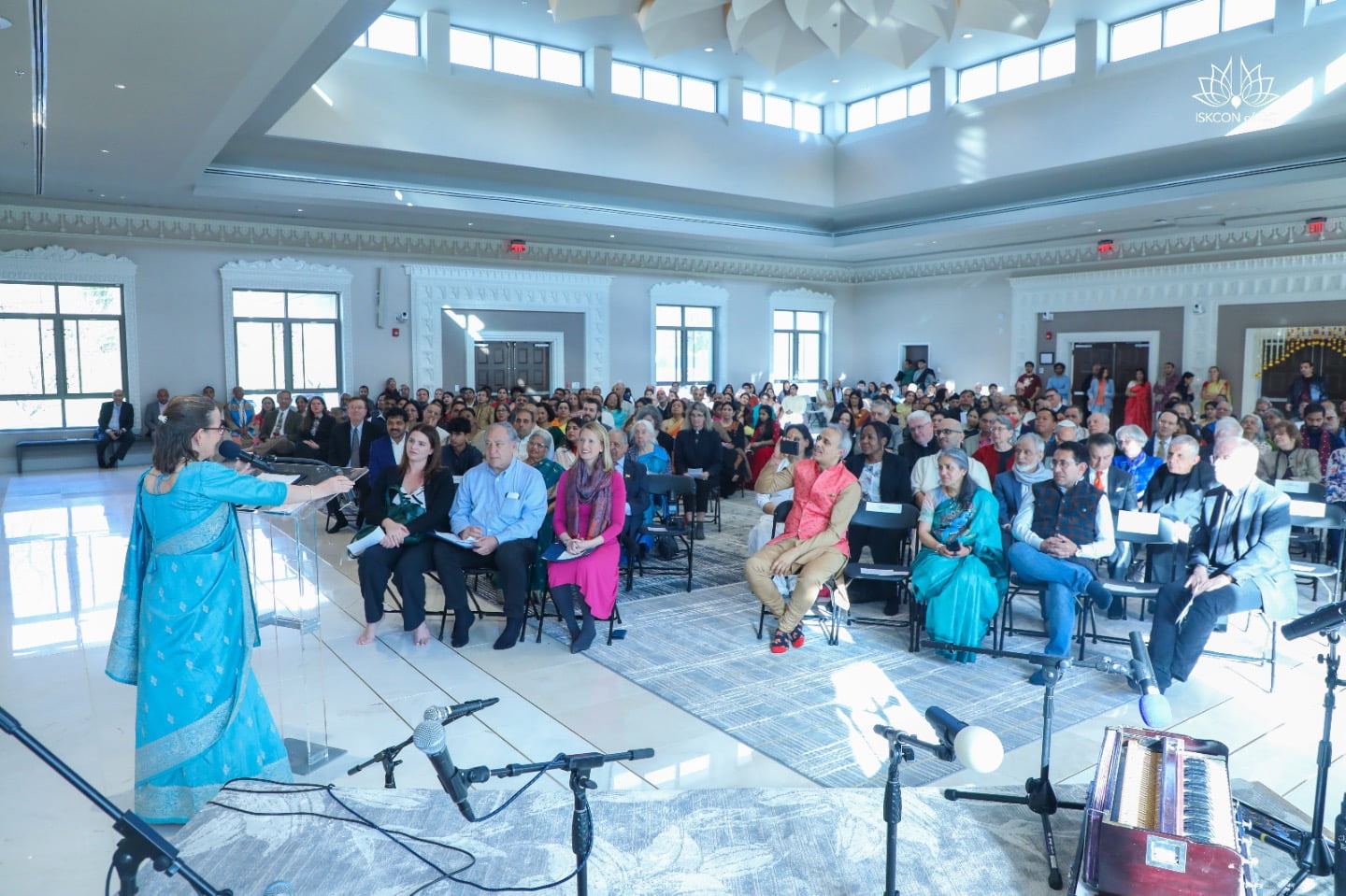ISKCON Copenhagen City Garden Yields Fresh Produce Year Round
By Madhava Smullen | Sep 21, 2017
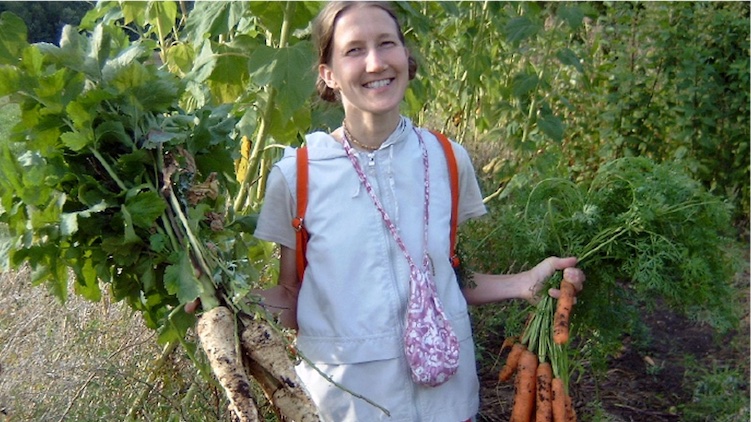
Near the ISKCON temple in Copenhagen, Denmark, a 200 square-meter garden plot provides the Deities and devotees with fresh organic produce year round. Its success offers a great example for urban temples, as well as a more sustainable model for rural ISKCON projects.
Temple president Lalitanatha Das, who does most of the work in the garden himself by hand, grew up on a farm; later, he and his wife grew all their own fruits and veg for a decade while living in the countryside.
Now serving in the city, he pays under $300 a year – less than 1 euro a day — to rent a government-allotted plot of land five minutes’ walk from the temple.
On the 200 square-meter piece of land Lalitanatha grows potatoes, cabbages, cauliflowers, broccoli, kale, celery, squash, pumpkins, beetroots, carrots, beans, lettuce, tomatoes and cucumbers. He has also has apple, pear and plum trees as well as various berries.
“While we still need to buy some things from outside, especially for Sunday Feasts, we do have fresh vegetables from the garden every day,” says Lalitanatha. “For instance this morning we had kichari with kale, squash and beetroot; along with a salad with different kinds of lettuce, cucumbers, and carrots – all from the garden.”

The entrance to the garden
Homegrown vegetables are available to the temple year round thanks to Lalitanatha’s savvy. Many greens grow through the winter; roots such as carrots, parsnips and beets are stored using a pipe system underground; and squash and pumpkins can be kept for over six months inside at room temperature.
Lalitanatha gets four times as much yield as in a regular garden by using highly efficient systems. He grows on raised beds with narrow pathways in between, so that he only ever steps on the pathways. Because the soil is never compacted by footsteps, it is loose. It’s also highly fertilized. All this causes the roots to seek downwards through the soft, easy soil for nutrition, allowing him to grow plants very close together and maximize each square meter.
Lalitanatha also divides his beds up systematically and uses a five-year crop rotation scheme, planting different vegetables in each bed every year. This ensures maximum yield as well as maximum utilization of nutrients to avoid diseases.
While all this sounds pretty involved, Lalitanatha ensures us that it really isn’t. “You have to know what you’re doing, and it takes some endeavor to establish everything,” he says. “But once your system is in place you just have to follow it. I spend less than one hour in the garden every day.”
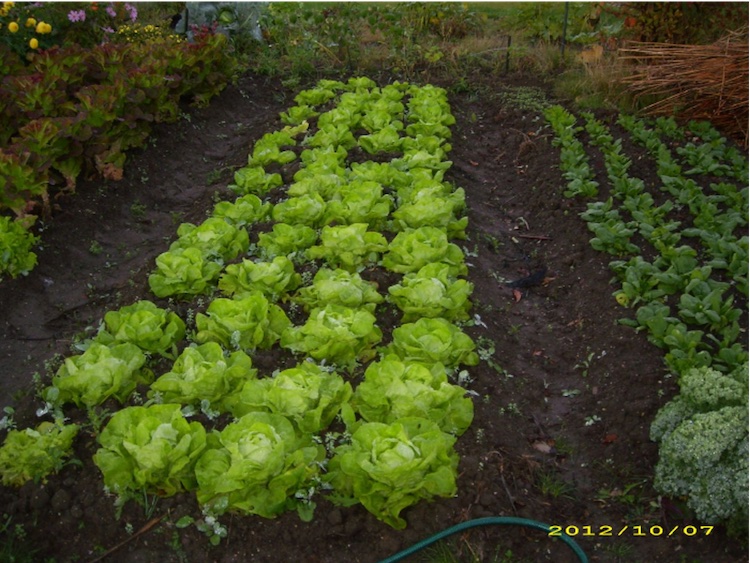
Lettuce growing in the garden
It saves big on gym memberships, too. “I’d rather not pay to work out,” Lalitanatha says wryly. “So I get my exercise in the garden, and instead of spending money I get paid with fresh produce.”
ISKCON Copenhagen’s little plot has garnered a lot of attention, with devotees from around the world coming to take photos, a national TV station filming a segment on it, and guests expressing their appreciation.
Of course, today, few have the knowledge or inclination to grow food. According to a study by the Environmental Management journal, grass is the United States’ biggest crop, with green lawns covering 40 million acres and using 900 liters of water per person per day. The situation is likely similar in many other Western countries.
And devotees are no different. According to Lalitanatha, newcomers feel inspired when they learn how much ISKCON’s philosophy focuses on a simpler way of living; but when they see so few examples of this philosophy in action at ISKCON temples, they lose respect.
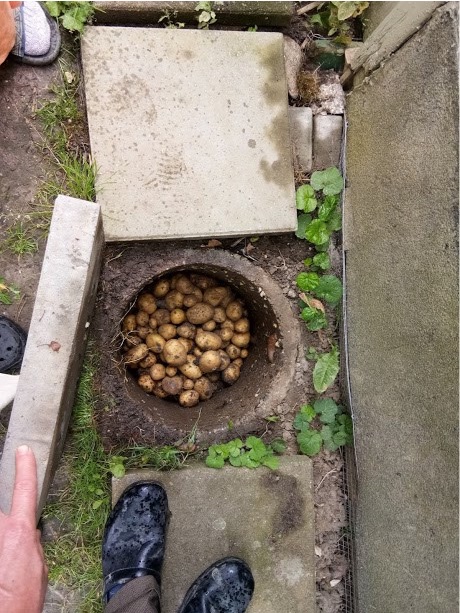
Storing potatoes for the winter
“Most temples have some land – some have a lot – as do devotees’ individual homes,” says Lalitanatha. “But for the most part, it’s being wasted on green lawns.”
Of course, you don’t need to have a government-allotted plot of land to grow your own vegetables. According to Lalitanatha, just 100 square meters of land – a fraction of the average lawn – could provide a typical family with the basic vegetables they need. And as proven, just twice that can supply a good portion of a temple’s needs.
Lalitanatha’s advice is to start small. While ISKCON has a handful of successful farm projects, many are fading or struggling, and much of that is due to unsustainable overambition in ISKCON’s early years.
“Start with just ten square meters, and see what you can get out of that,” he says. “Then once you gain some experience, the next year you can expand to twenty, and so on. Read some good literature on growing techniques, like John Seymour’s “The Self-Sufficient Gardener” or any of Eliot Coleman’s books on organic growing. And be prepared that depending on our own produce requires patience, rather than the immediate gratification we’re used to from supermarkets.”
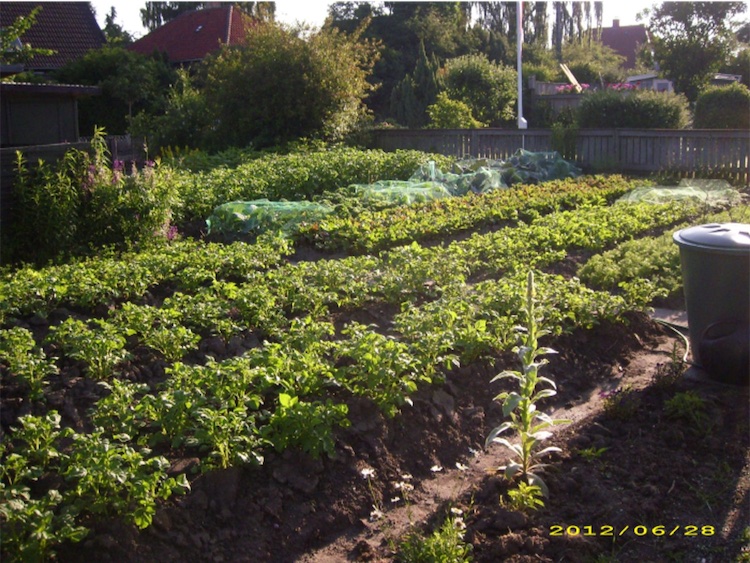
The garden utilizes pathways between each bed
Lalitanatha advises farm projects not to start with cows, but rather to learn manual labor by developing a garden first. Once one is an experienced gardener, one can introduce a single cow. The cow’s most valuable asset, he says, is dung, which can cause miracles as fertilizer for a garden. The second is milk.
In this way, cows are an asset from the beginning, rather than a liability, as often happens on ISKCON farms that have dozens of cows with no use for them.
Before getting male calves or oxen, meanwhile, a training program must be already in place, so that the animal immediately has employment in tilling the land. Animals that are not properly engaged or producing anything become a burden, and kill farms, according to Lalitanatha.
His advice may seem strong, but it is extremely practical and ultimately encouraging to devotees, showing just how much they can do with very little.
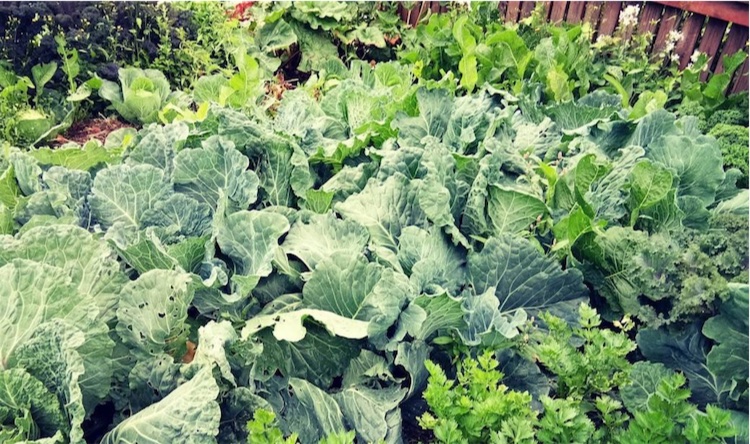
There is always a thriving crop
“Farmers should be prosperous and wealthy!” he grins. “If they’re not, then something’s wrong!”







